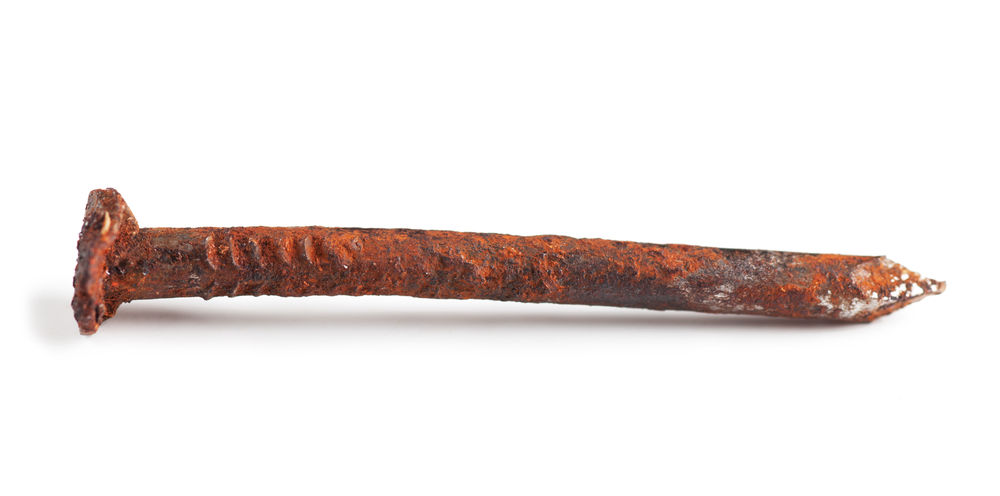

The conversation in which your parents tell you to keep an eye out for rusty nails is basically a rite of passage. They tell you about the dangers of rust; explain the see something, say something protocol for things that look like they could puncture you; and foreshadow the harsh punishment for disobeying—lockjaw.
This advice certainly comes from a good place. But it’s also fundamentally wrong.
This is not to say that tetanus isn’t as bad as parents promise. In North America, the Cleveland Clinic estimates, 10 percent of cases are fatal. In countries with inadequate or inaccessible medical care, the number is believed to be much higher.
Even survival takes its toll. On Friday, the U.S. Centers for Disease Control and Prevention released a new installment in its “Notes from the Field” series about an unvaccinated 6-year-old boy in Oregon who contracted tetanus after he got a cut in his forehead. The bacteria incubated inside his little body for a few days, then suddenly manifested in horrible jaw clenching and muscle spasms, heart rate, blood pressure, and body temperature irregularities. He lived, but only after 57 days in the hospital and more than $800,000 in medical bills.
But counter to what rusty nail warnings might have you believe, the disease has nothing to do with iron oxide, the chemical compound more commonly known as rust. Rather, tetanus is a product of the bacteria Clostridium tetani, which is in dirt, dust, and feces—in other words, everywhere. It can enter your body through puncture wounds, yes, but also through superficial cuts, bug bites, surgical procedures, and any other rupture to your skin. It can come from stepping on a rusty nail, or tending the soil in your garden. That’s why it’s so essential to track your booster shots: You need one every decade, not just when you rip your palm open on a rusty chain link fence. Waiting for a classic tetanus injury won’t work when anything could, in theory, be a tetanus injury.
If the bacteria enter your body and you aren’t up-to-date on your vaccinations, the tiny invaders begin to multiply rapidly. This incubation period, which lasts between three and 21 days, according to the CDC, is symptom free. But as the bacteria begin to die inside you, they form a neurotoxin that attacks the nervous system. Specifically, it inhibits the chemical GABA, which regulates muscle contractions. The result is a body-wide state of tension, from lockjaw in your face to uncontrollable arching spasms in your back to permanently-curled toes.
How rusty nails came to be so closely associated with tetanus isn’t clear. Iron oxide is basically harmless to the human body; millions of people drink water transported by rusty iron pipes with no health effects. (Bridges aren’t so lucky—rusting has buckled many an iron span.) Perhaps it’s some classic American folklore. Or, as Esther Inglis-Arkell argued on the site i09, it has something to do with the anaerobic environment in which the tetanus-causing Clostridium tetani bacteria thrives. As iron oxidizes, it eats up atmospheric oxygen, creating a low-oxygen environment for the bacteria to grow. While rust doesn’t cause tetanus, the two may have a symbiotic (and symbolic) relationship.
For thousands of years, tetanus plagued humankind. Hippocrates, the ancient Greek physician, mentioned the disease in his works. But in 1884, researchers discovered how the disease worked, and just 40 years later, scientists had developed a vaccine. Today, three shots and a booster every 10 years is basically 100 percent effective at preventing tetanus, whether it’s contracted from a seemingly-clean kitchen knife, a diaper change, or a rusted-up nail. The best part? It’s not too late to get yours. Make sure your booster shots are up to date!
